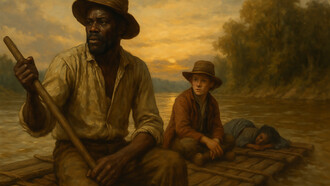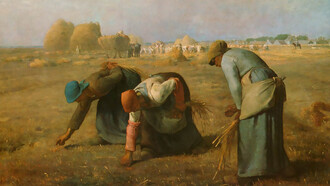Though books are still the main support for content at the German Frankfurter Buchmesse, the fair has shifted its profile to provide various spaces dedicate to different supports for sharing content. Among the 6 Halls that encompass the fairground we find the Guest Country of Honor – Norway – as usual at Hall 1. In Hall 4 – which is mainly dedicated to international publishers, images, German literature, academic publishers and institutions dedicated broaden the view and foster ties on internationally –, we also find everything that links text to images. The Weltempfang – which can be translated as World Reception – provides the stage to all of them at Hall 4.
First things first
My first 80.000 words is the title of an exhibition of various illustrators at Media Vaca, a Spanish publisher based in Valencia that gathers illustration artists from all around the world. At the same Hall 4 takes place the B3 Biennale Bewegtes Bild in close collaboration with The Arts+, the space dedicated to new technologies, interactive audio visual media – like VR and AR – and new business models for content. At The Arts+ we also have the chance to attend the new format Create your Revolution, launched by French-German television broadcaster Arte to have talks with artists and creators from all around the world. Though English is the main language for trading and translating books to other language, Spanish speaking literature is also largely present. Argentina, Brazil, Colombia, Cuba and other Latin American countries send their representatives to Frankfurt.
Encounters and chats on the go
Among the many publishers, agents and authors I have a short conversation with the Cuban author of microfiction and narrative, Mrs. Asel María Aguilar Sánchez (1977) about her two recent books Agua pequeña (Small water, 2017) and Muchacha con frío (Girl with Cold, 2019), both published by Colección SurEditores, Havana, Cuba.
Asel, you are for the first time at the Frankfurt Book Fair and also presenting your first book: Agua pequeña (2017) is as a collection of like miniature paintings from the children's perspective on that microcosm that is the family and the neighborhood itself. The following text inspires particular tenderness to me:
12
El bisabuelo Luís está ciego y muy viejo. Si oye que llego, él estira las manos y me acerca. Me toca la cabeza y la cara. Yo hago lo mismo, le acaricio la pelusa que parece de cachorro. Cierro los ojos para que no se sienta solo.
Microfiction seems to be the appropriate genre for those of us who read on their cell phone. However, in SurEditores you bet on the printed books. What implicit message does this carry for you?
I prefer the traditional book. In this age of cell phones and hurries, the paper book is like an oasis; to open it and you disconnect for a while. But after all, it is about reading, no matter if on a phone, a tablet or a laptop, it is about reading under any circumstances!
In your second book Muchacha con frío (Girl with Cold, 2019) – a Bestseller in Cuba by the way – you deal with migration experiences in Switzerland. How do you allude to the winter landscape with figures and metaphors of the tropical environment?
The stories in Muchacha con frío are about our customs, family, love, of the people of Cuba, simple and kind. But it deals mostly with farewells and reunions: Cubans walk the world, the same on the Mexican border, as in the US, as in the Alps or at the foot of the Egyptian pyramids. It is a book for all Cubans and all of those who love Cuba, no matter their country, the color of the passport or the landscape. So they will never ever feel cold.
You are a geologist by profession and work at the Federal Institute of Technology, ETH Zurich. Knowing that you are a geologist influences my reading of your texts:
10
Mami cuenta estrellas y me asusto. Me aprieto los ojos y a su pecho. Ni me asomo. Tan chiquitas las estrellas pero me asustan más que las visitas, y eso que no me piden besos, ni que recite los números o me cuente los dedos de las manos. Las visitas no brillan. No me alcanzan mis números para las estrellas.
Do you think that as a geologist you have a particular approach to the matter?
Geology brings you closer to nature: to rocks and rivers, it connects you with the processes that transform landscapes, it gives you another perception of time thinking in terms of geological time. I think that nature always connects with art, they are complementary. Geological history is written in fossils, strata and folds, rocks are the books of geologists.
The Frankfurt International Book Fair is one of the few opportunities to meet in person and publishers of specialized fields around the world. Have you had an encounter that has impacted you here, at the Frankfurt fair?
Yes, I loved the encounter with Deutsch-Schweizer-Österreichische Literaturgesellschaft, the German-Swiss-Austrian Literary Society and with Kalima, from the Arab Emirates, I hope good collaborations will emerge.
Thanks for sharing your stories here at the book fair.
The International Book Fair of Frankfurt 2019 presents due to the modernization of the infrastructure over a smaller area than in previous years but closes with 302,267 visits and 7,450 exhibitors from 104 countries which represents a slight increase in visits. Guest of Honor for 2020 is Canada and the Bookfair 2020 takes place from October 14 to 18.















